
14 minute read
WATER NEED FOR HUMAN
THE WATER TODAY AND TOMORROW
INTRODUCTION
Advertisement
Water is the gift of God to the citizenry. It is the essential commodity for man, without the use of water human survival on this earth is beyond imagination. So is that the case of the Animalia. Day to day domestic activities like cleaning, washing, cooking, drinking, and many more are hooked into water. Even human plasma contains about 90% of water. Body organs like the brain, kidney, and digestion system function are solely dependent on water. Deficient use of water can hamper the functioning of our body organs. Therefore, it is said that water is our life, without water, there is no life on this earth. Our earth occupies 3/4 parts of water, however, still, water has become a scarce commodity nowadays in this world. Many countries like Sudan, Venezuela, Ethiopia, Tunisia, and Cuba have become water scarce countries today.
Humanity is liable for making water as a scarce commodity. The reasons are:
Industrialization, that polluted large amounts of water bodies on this earth.
The population has grown many folds so it becomes difficult to cater to the potable water needs of the community.
Lavish use of water in the domestic sector without accountability.
Lavish use of water in industrial, irrigation, and other recreation fields.
SOURCES OF WATER:
Glacier Water:
Glaciers are our great source of potable water, however, nowadays they're depleting in size and hence decreasing our source of potable water. This is happening due to the climatic changes occurring because of pollution. This depletion of glaciers can be reduced by controlling pollution. Industries strictly to be prohibited from the emission of CO2, Chlorine, and other greenhouse gases into the atmosphere. This can be done by installing the pollution control equipment in the industries. Upgrading the plant equipments to reduce the fugitive emission of pollutants
Similarly, domestic and industrial wastewater is generated to be treated in wastewater treatment plants for recycling and use in agriculture and other purposes. This can save an enormous amount of water for our future use.
Ocean water:
Ocean water is a great source of water, however, this can not be used in industries as well as in the domestic sector because it is salty in nature. Desalination of water to be carried out before
use in industries and in households. Countries like Israel, Australia, and other countries using this water by using desalination technology.
River water:
River water is a good source of water. Only a few big rivers are glacier feed, and they remain alive in all seasons. Small rivers are rain fed and they continue to be alive in the rainy season only. On big rivers, dams are being constructed nowadays to store more water to use for allseason. The dam water is used for electricity generation, agriculture, and other purposes. River waters to be protected from industrial and sewage pollution to stay our rivers alive for an extended time.
Lake water:
Lake water is a good source of water. A large quantity of water is stored in them, they are spring feed. They are deep and hence increase the water level of the surrounding area. Domestic water supply is obtained from the lake.
Pond water:
Pond water is a good source of water. They are smaller and usually store the rainwater. They should be deepened to extend their storage capacity and to increase the water level of the encompassing area. Pond water is used for agriculture and domestic purposes.
Springwater:
Springwater is often an endless source of water, as the spring flows underground and starts flowing on the surface of the earth where it gets the opening in the earth. Continuously fowling springs form the lakes.
Rainwater:
Rainwater is an honest source of water, however, it is available in the rainy season only. Efforts to be made to store the rainwater during the rainy season to use the same when required. In residential buildings, rainwater harvesting systems are installed to store a large quantity of water. The rainwater to be conveyed to deep soil in the earth to increase the water. This groundwater is often fetched through deep groundwater pumps.
Deep underground water:
Deep underground water is the water stored deep underground, that comes out from the rocks in the form of springs. Also, some rainwater penetrates the deep soil and gets accumulated in
the deep soil. This water is often fetched through deep bore well pumps for use. Deep bore wells are recharged by rainwater harvesting.
STEPS TO SAVE WATER CONSUMPTION:
1) To do drip irrigation
2) To do rain harvesting
3) To recycle municipal wastewater
4 To enlarge and deepen ponds along the farm side.
To do drip irrigation:
Drip irrigation is an efficient method of irrigation where plants are irrigated directly at the roots of the plants. Plants are directly irrigated at the roots, hence reduces the water evaporation losses. This way saves water consumption. Drip irrigation is administered through piping, valve, and emitter. This technique can be used to convey water to the plant roots above the surface or roots underground.
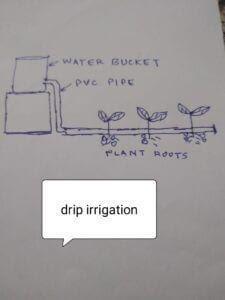
To do rain harvesting:
Rain harvesting is to collect rooftop rainwater to the tank above ground or underground with the assistance of the piping system in the building premises. This water is often used when required. The rainwater to be used to recharge deep bore well.
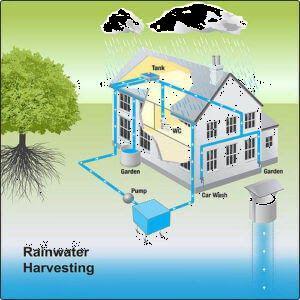
To recycle municipal wastewater:
Metro cities generate a thousand gallons of sewage water that is to be treated in wastewater treatment plants installed by municipal corporations. This treated water is used for farm irrigation purposes, an excellent saving in water consumption can be obtained by recycling municipal wastewater.
To enlarge and deepen ponds beside the farms:
Many huge ponds are to be dug beside agricultural farms to gather the rainwater in them that can be used for irrigation of the farms. These ponds are deepened to gather more water that increases the water level of the encompassing area.
POTABLE WATER NEED OF EACH INDIAN
Govt. India has announced on 15th August 2020, to provide piped potable water to each house of urban as well as rural in India. This might require a huge infrastructure, however, this is required to protect our citizens from various diseases which contaminated drinking water is causing.
This is a great initiative by the Govt. in the interest of citizens.
Water that's safe for drinking is named as potable water, it is used for food preparation too. Potable water must be free from impurities like suspended rubbish, dissolved solids, and bacteria or germs. Potable water is extremely essential for our good health. A large amount of water is required to keep our body functions in order. It maintains our body heat and flushes out the toxins from our body organs.
THE CONTAMINATION OF WATER
Water bodies like rivers, ponds, lakes and rainwater contain impurities like germs, dirt, rubbish, and dissolved salts which are harmful to human health. The contaminated water may cause various kind of diseases that affect our intestine are as follows :
(1) Dysentery
(2)Polio
(3)Typhoid fever
(4)Cholera
(5)Diarrhoea
(6)Amoebiasis
(7)Hepatitis
(8)Fluorosis.
DYSENTERY
Bacteria present in contaminated water and stale food may cause dysentery. If acute dysentery occurs one has to replace the body fluid frequently or it's going to cause dehydration and even loss of life. Symptoms of dysentery: Stomach pain, fever, vomiting, dehydration.
POLIO
This mainly affects children. This is known as infant paralysis. It is caused by contaminated water and stale food. This affects the medulla spinalis of the person as this advances cause paralysis in certain cases.
TYPHOID FEVER
This also affects the intestine. It is caused by contaminated water, food and poor sanitation. It's contagious. Symptoms may be high fever, muscle pain, and diarrhoea.
CHOLERA
This is caused mainly due to bacteria present in the contaminated water. This happens frequently in rural areas where poor hygiene and sanitation exists; this is often the deadly infection, to be attended quickly. Symptoms are vomiting, diarrhoea, muscle cramps.
DIARRHOEA
This is a gastrointestinal disease. Bacteria ingestion through contaminated Water and food may cause diarrhoea. In acute diarrhoea, there's plenty of loss of water from the body. The body fluid to be replaced frequently by ingestion of electrolyte.
AMOEBIASIS
This infection is caused by the amoeba present in the drinking water. It affects our colon. This will also occur if contaminated water is employed for food preparation. This is often caused by eating raw food or fruits.
Symptoms are: abdominal pain, diarrhoea and blood in the stool
HEPATITIS
This is caused by contaminated drinking water and stale food. This affects our liver. It is often contagious. Poor hygiene and sanitation in rural areas are the most cause of this disease. Symptoms are yellow eyes, yellow urine, abdominal pain, vomiting, fatigue, and clay coloured bowel movement.
FLUOROSIS
This is caused by consuming excess fluoride. This might contain within the drinking water. It affects our teeth and bones. Fluoride ingestion in large quantities causes skeletal problems in the human body.
DOMESTIC METHODS TO MAKE WATER SAFE
The pure and safe water is obtained by using the following methods
BOILING OF WATER:
Boiling of water kills the germs present in rivers, spring and groundwater. Add some drops of permanganate of potash, to disinfect the water.
IODINE IN WATER:
Iodine is employed to purify water. Few drops of- 2% iodine solution disinfects the water. It also clears cloudy and coloured water.
CHLORINE IN WATER:
Chlorine gas is employed to disinfect the water. It kills the germs, bacteria's, virus and pathogen's present in the water. Chlorine tablets can also be added to the water for its purification.
ULTRAVIOLET RAYS:
Ultraviolet lamps are available within the water purification systems available within the markets. Use of ultraviolet rays for water purification is the effective method of disinfecting the water. Ultraviolet rays penetrate the harmful pathogens of our home water. They attack the genetic code(DNA) of those microorganisms and safe drinking water is obtained.
MUNICIPAL WATER TREATMENT PLANT
To get the safe water for our day to day use, water to be free from suspended and dissolved impurities. Also, the water should be free from germs, bacteria, virus, parasites and pathogens that are harmful to human health. To remove all these impurities from water, it's been treated at
municipal water treatment plants by various techniques and methods. The sequence of techniques for water treatment are discussed as follows:
(1)Collection of raw water
(2)Screening of water
(3)Chemical addition in water
(4)Water coagulation and Flocculation
(5)Water sedimentation and Clarification
(6)Water Filtration
(7)Water Disinfection
(8)Pure water storage
(9)Distribution of water
COLLECTION OF RAW WATER
Municipal corporations get the raw water from rivers, lakes and reservoirs. This water is pumped to the water treatment plant and picked up into the ponds or tanks known as settling tank.in the settling tank, large size impurities like the plant, trees, vegetation, rubbish are settled at the bottom of the tank.
SCREENING AND STRAINING
Water from the settling tank is transferred to the chemical addition tank. During transferring of the water from settling tank to chemical addition tank, it's screened through wire mesh strainers to get rid of fine suspended impurities.
CHEMICAL ADDITION
In the chemical addition tank, various coagulants are added into the water. A commonly used coagulant is aluminium Sulphate or Alum. Other efficient coagulants to be used are Ferrous Sulphate, Ferric Chloride, Sodium Aluminate, Activated Silica and Various compounds called polymers. Polymers added to the water as coagulant are of three kinds: (1) Cationic polymers(positively charged)
(2)anionic polymers (negatively charged(3) non-ionic polymers(neutrally charged). These chemicals are added to water and mixed well to form big and heavy clumps of suspended particles are called floc’.
WATER COAGULATION AND FLOCCULATION
Then the water is transferred from the coagulation tank to the flocculator for further process. Flocculation is' The tank with agitators where flocculation is carried out at the slow speed of agitator impeller’. These are the tanks with agitators. Initially, the agitators are moved at a fast speed to mix the chemicals well with the water. Later the agitators are moved slowly that allow the suspended particles to mix to make the heavier floc. The chemicals are added to water to cause the suspended material to return together and form the clumps of huge particles. Clumps are formed during the process of coagulation or flocculation.
COAGULATION AND FLOCCULATION TANK[
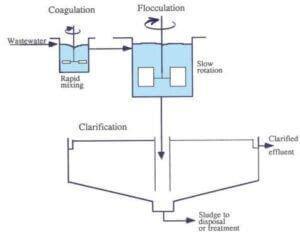
WATER SEDIMENTATION AND CLARIFICATION
Once the process of flocculation is over the water is transferred to the clarifier. In the clarifier, heavy floc formed within the flocculator is separated from the clear water. Clearwater received from the periphery of the clarifier is sent to the filtration bed. The floc and dirt collected from the centre of the clarifier and sent to sludge drying ponds.
WATER FILTRATION
Water received from the clarifier is almost clear from suspended impurities, however, for the further finish, it's passed through different layers of sand, gravels and activated charcoal in the infiltration bed. The water is free from all suspended impurities when passed through the filtration bed. It contains the germs, bacteria, virus and other pathogens so it's sent for disinfection.
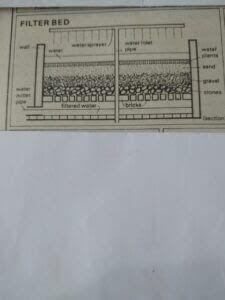
WATER DISINFECTION
To remove the germs, bacteria, virus and pathogens from the water it is to be disinfected. Usually, chlorine gas is passed through the water. This process of disinfection is called chlorination. During chlorination, water is tested frequently to find harmful germs. If it is found free of germs then sent for storage as potable water.
WATER STORAGE AND DISTRIBUTION
Potable water is stored in the underground tank and overhead tanks from where it is being sent to various parts of the city to cater daily needs of water of the community.
THE WATER SCARCITY AND DROUGHT
Water is the free gift of god to human being.It is the essential commodity for human being,
Without the use of water human Survival on this earth is beyond imagination. So is the case of Animal kingdom. All our day to day domestic activities like cleaning, washing, cooking, drinking,and many more are dependent on water. Even human blood plasma consists of about 90% of water. All our body organs like the brain, kidney,and digestion system function on water. The deficient use of water starts the malfunctioning of our body organs. Hence water is our life, without water there is no life on this earth. Our earth is covered by 3/4 part of water, however still water has become the scarce commodity in this world.Many countries in African continent like Somalia,Sudan, and Ethiopia are facing acute water scarcity. Due to less or erratic rainfall and increase in earth temperature, top soil of the earth is getting dried and farming has become impossible. There is the shortage of food stock for the community. Children are facing acute nutrition problem.All these problems of less and erratic rainfall, drought and famine are happening due to the climatic change.
Top Soil is Dried up During Drought
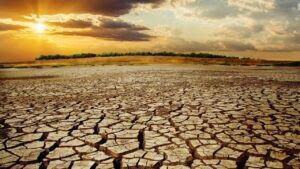
Human race is responsible for bringing the climatic change on this earth. To save the earth we should eliminate the reasons which are behind the climatic change.The reasons behind the climatic changes are:
(1). More industrialization,which has polluted large amount of water bodies and atmosphere on this earth.In the atmosphere we are dumping large amount of greenhouse gases like CO2, Methane,Nitrous oxide and Flo urinated gases which are causing increase in earth temperature.Increase in earth temperature is main cause of climatic change. Climatic change is causing less rainfall in some parts of the world and floods in other parts of the world.Our Focus must be on to reducing pollution whether it is air pollution or water pollution.
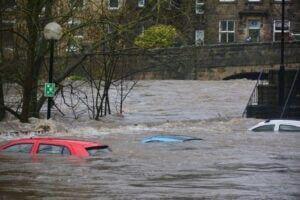
Flooding due to climatic change
(2). Population growth is also becoming a challenge to cater to the potable water needs of the community.On one hand our food grain production is decreasing due to the climatic change. On other hand drought and famine are causing,then it would be difficult to provide sufficient quantity of food to the world community.Hence now it has become the need of hour to take action to control the growth of population.
(3). Lavish use of deep underground water in domestic and industrial sectors without accountability to be reduced.Every house and industry are drawing water from deep underground. There should be a limit to draw deep underground water.Due to climatic changes rainfall is reduced in many areas of the world.This has caused less penetration and accumulation of water in deep underground.As we are drawing water from deep underground continuously,our deep underground water resource is depleting. Our earth's soil is getting dried. It is feared that one day our earth will be dried due to profuse use of deep underground water.
(4).To use industrial and municipal treated water in irrigation,and recreation fields. A huge quantity of wastewater is generated during our industrial process, this is to be treated and be used in farm irrigation. Similarly a large quantity of wastewater is generated due to our day to day activities like washing, bathing,cleaning, and cleaning,same is to be treated in municipal water treatment plants and then to be used for farm irrigation.This will save a large quantity of water for our future use.

